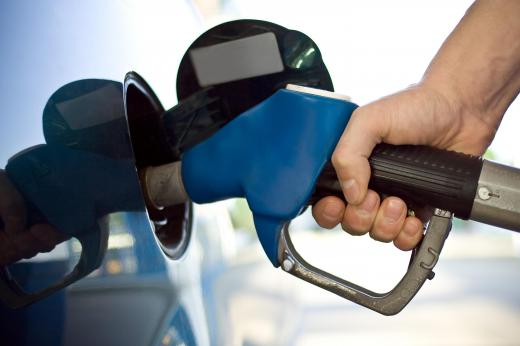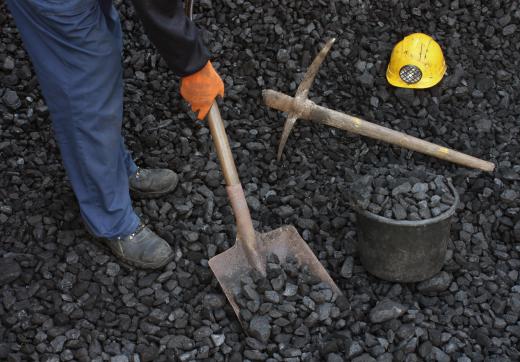What are Calorific Values?
 Mary McMahon
Mary McMahon
Calorific values represent the amount of heat produced during combustion. People use calorific values to determine how efficient and effective fuels are, looking for fuels with high calorific values to use in energy generation. These values can also be seen in the world of nutrition, where they are used to determine how much energy can be found in food. The higher the calorific value, the more energy someone can derive from the food, which is why people like athletes are encouraged to eat high calorie meals to fuel their bodies during training and competition.
Determination of calorific value is done inside a device called a calorimeter. A set amount of the object being studied is burned in controlled conditions, and the products of combustion are measured to find out how much heat was released during combustion. The resulting calorific value is expressed in energy per unit, such as kilocalories per gram in the case of foods.

Two different measures can be used. Net calorific value, also known as higher heating value (HHV) assumes that water produced during combustion remains in a liquid form. Lower heating value or gross calorific value (LHV) is calculated under the assumption that water produced turns into vapor. These two different values are used to determine how calorific values apply in the real world with different types of systems.

Of the fuels, hydrogen has the highest calorific value, which would seem to make it an excellent source of energy. Unfortunately, hydrogen is not very stable, and it requires some very special handling. This makes it a potentially costly fuel, leading people to turn to alternative fuels which are easier to handle. Some other fuels with a high calorific value include methane and gasoline. Charts which give the calorific values of well known fuels are readily available, for people who are interested in topics like the calorific value of coal or the calorific value of natural gas.
When designing systems which use combustion of fuel as a source of energy, engineers need to think about the calorific values of different fuels they can choose from, and weigh the costs and benefits of each fuel. System efficiency is an important design value, but engineers also need to think about issues like fuel storage, how polluting a fuel may be, and how readily available the fuel is on the open market. Sometimes compromises must be made to make a system more accessible to potential buyers who might be coping with issues like limited fuel availability.
AS FEATURED ON:
AS FEATURED ON:












Discussion Comments
Can calorific value could be listed for food?
How do i relate the calorific value to how much energy is produced by burning hydrogen to heat something else?
Post your comments